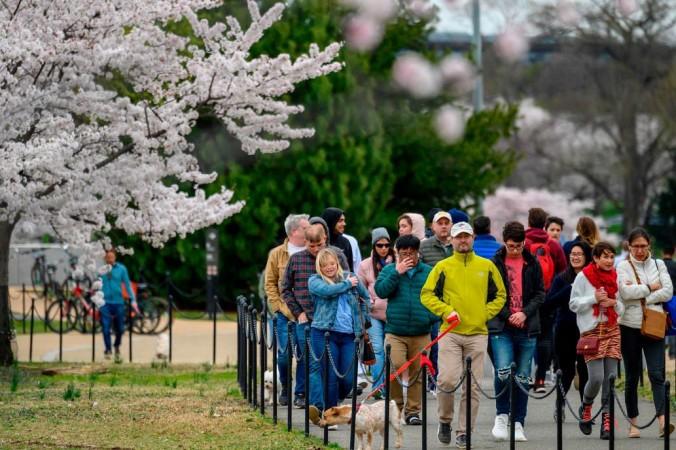Although the crowds are thinner, the warm long weekends in Tokyo saw people packed into the traditional cherry blossom hotspots, many not even wearing face masks, to admire the fluffy white and pink flowers hanging from delicate stems.
The cherry blossom season or the hanami season is an extremely important time of year for the country, both economically and culturally. The people of Japan, as well as the millions of tourists, throb in to see the blossom.

Washington DC too witnesses the beauty
Spots in Washington DC have also got its streets covered with the pink and white floral carpets.
Every spring, the flowers bloom for just a few days in the Tidal Basin area of the US capital — drawing large crowds with events and watch-parties despite the cancelling of the National Cherry Blossom Festival, which had been set for March 20 to April 12.
Tokyo allows visitors under restrictions
In Tokyo, the authorities have asked the visitors not to hold parties to limit the spread of the coronavirus. Tokyo Governor Yuriko Koike admits that taking cherry blossom parties away from Japanese was like "taking hugs away from Italians", but has also urged people to avoid gathering in large groups to drink and snack under the trees.

The sides of the main street were roped off, with signs saying "no party zones," discouraging the picnickers.
Loudspeakers in Ueno Park, where almost 800 cherry trees are in full bloom, blared messages warning against gatherings, and there was little sign of the massive company parties that are popular during the season.
South Korea whereas imposes denial
But unlike the Japanese officials, in South Korea, the situation is something different. The country has reported nearly 9,000 infections and more than 100 deaths from the virus.

On this light, Huh Sung-moo, the mayor of Changwon city, which includes the blossom hotspot Jinhae said: "Since we can''t completely stop spring-time picnickers from coming... we are closing all key cherry blossom spots which will have the same effect as preventing tourists."









!['Had denied Housefull franchise as they wanted me to wear a bikini': Tia Bajpai on turning down bold scripts [Exclusive]](https://data1.ibtimes.co.in/en/full/806605/had-denied-housefull-franchise-they-wanted-me-wear-bikini-tia-bajpai-turning-down-bold.png?w=220&h=138)



